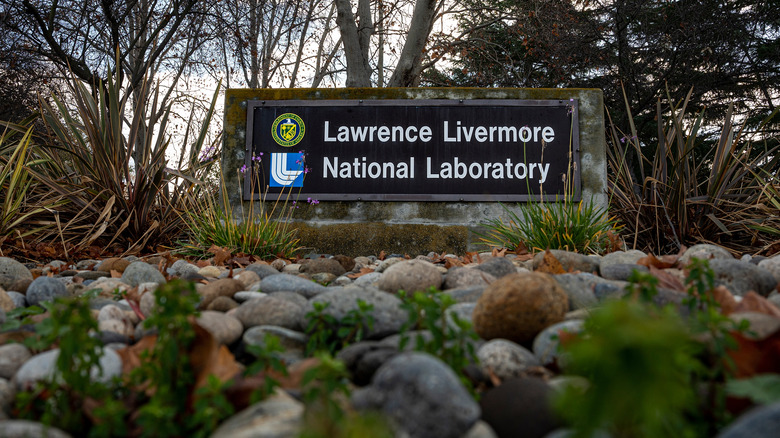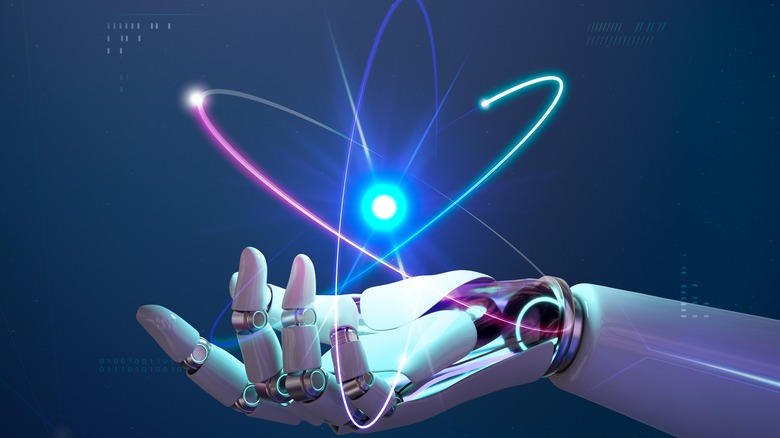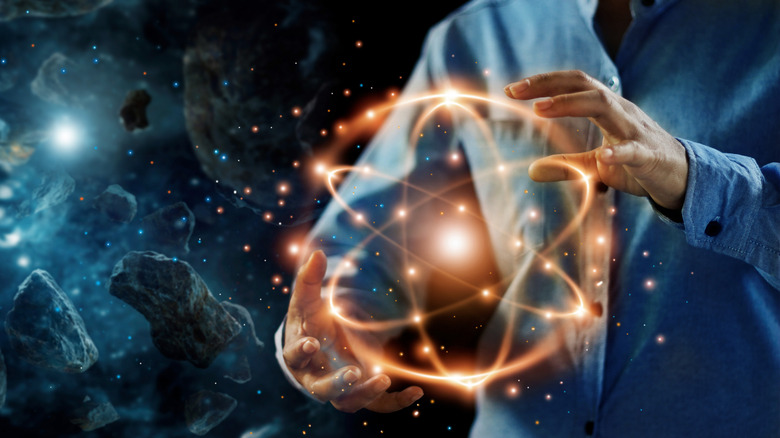The Groundbreaking Clean-Energy Discovery Made At Lawrence Livermore National Laboratory
For over a century, the world has largely relied on fossil fuels for its energy needs. Of course, this is not sustainable for a number of reasons, not the least of which is that the waste from burning all of those fossil fuels is contributing to climate change. Certain forms of clean and/or renewable energy, such as solar and wind, are promising, but also limited. Nuclear energy also has promise, but there are certain drawbacks, including the fact that it produces radioactive waste that must be dealt with, as the U.S. Energy Information Administration explains.
There is, however, a way to create nuclear energy in a way that doesn't produce waste. As CNN reports, nuclear fusion produces clean energy without any waste products that must be contained and stored, nor does it produce greenhouse gasses that cause climate change. The thing is though, fusion requires an immense amount of energy to facilitate, and as such, isn't a very efficient way to produce energy.
However, as The Atlantic reports, on December 12, 2022, researchers at the Lawrence Livermore National Laboratory made a breakthrough that resulted in the fusion process producing more energy than it consumes, potentially signaling a breakthrough in the quest for limitless, non-polluting energy. So far the results are preliminary and the goal of producing energy this way remains potentially years — if not decades — away.
Fission and Fusion
There are two ways to harness energy from the atom, as CNN reports: Fission and fusion. Fission is what happens when you split an atom; as the Department of Energy explains, the energy is used to produce steam, which spins turbines, producing energy. It's all well and good, except that it produces radioactive waste that has to be stored somewhere; that, and if something goes wrong, entire regions can be made radioactive — just look at what happened at Chernobyl. The overwhelming majority of the world's nuclear reactors are fission reactors.
Fusion is what happens when atoms are fused together; the energy from fusion is what literally powers the sun, and on a small scale, it can power whole cities. It also doesn't produce radioactive waste or greenhouse gases. Unfortunately, fusion requires extremely high temperatures in order to take place, so a fusion reactor itself consumes a lot of energy in order to produce energy. As such, they're remarkably inefficient; as the International Energy Forum reports, only a handful (20 or so) of the world's nuclear reactors are fission reactors.
But what if the energy requirements to produce fission could be significantly reduced? If we come up with a way to do that, we could have a potential source of limitless, non-polluting, cheap energy. And scientists recently got us one step closer to that goal.
The Fusion Breakthrough
As CNN explains, in December 2022, scientists working at the Lawrence Livermore National Laboratory announced that they had managed to produce a fusion reaction that resulted in more energy than it consumes. The science is complicated, but long story short, scientists launched pellets containing hydrogen fuel into an array of lasers, and the resulting reactions produced a net energy gain: 120%, to be specific, according to CBS News. Jeremy Chittenden, co-director of the Centre for Inertial Fusion Studies at Imperial College in London, noted that the experiment produced extremely limited results: "About what it takes to boil 10 kettles of water," he said. Scaling that up to a reactor large enough to power a city is not yet possible.
Tony Roulstone, a fusion expert from the University of Cambridge's Department of Engineering, told CNN that the 2022 results are just one of likely many breakthroughs that will be required before limitless, free, non-polluting energy from nuclear fusion becomes a thing. "This result is miles away from actual energy gain required for the production of electricity ... [It] is a success of the science but a long way from providing useful energy," he said.


